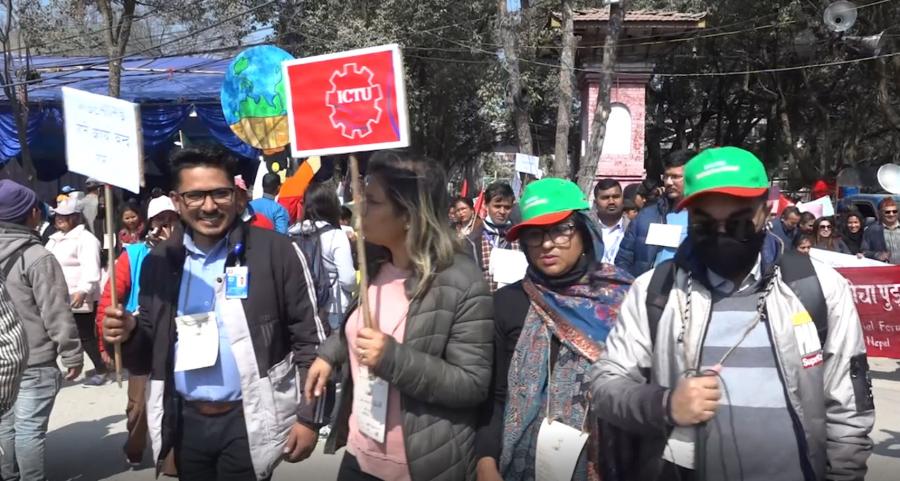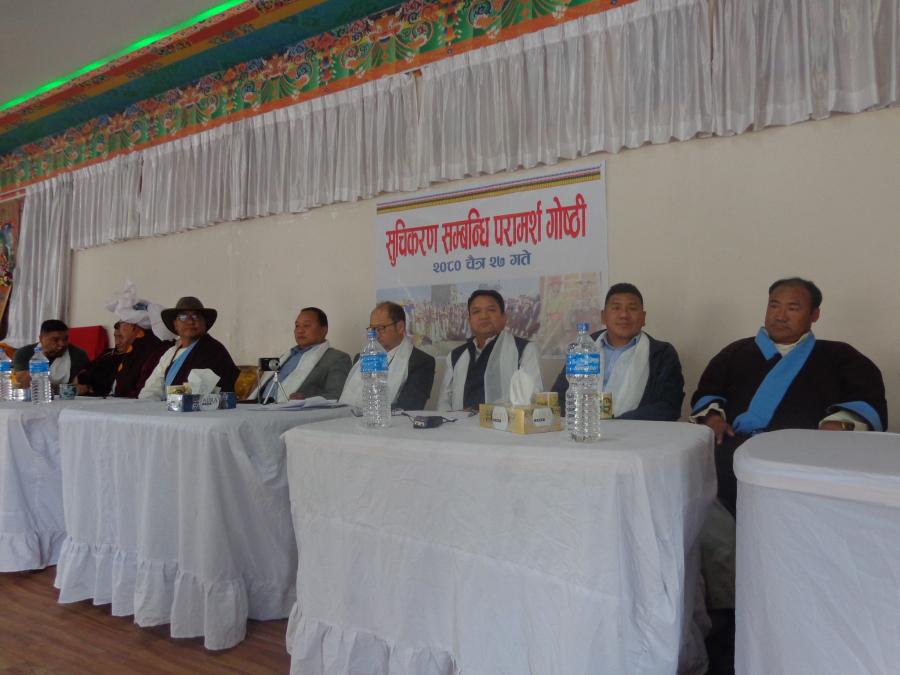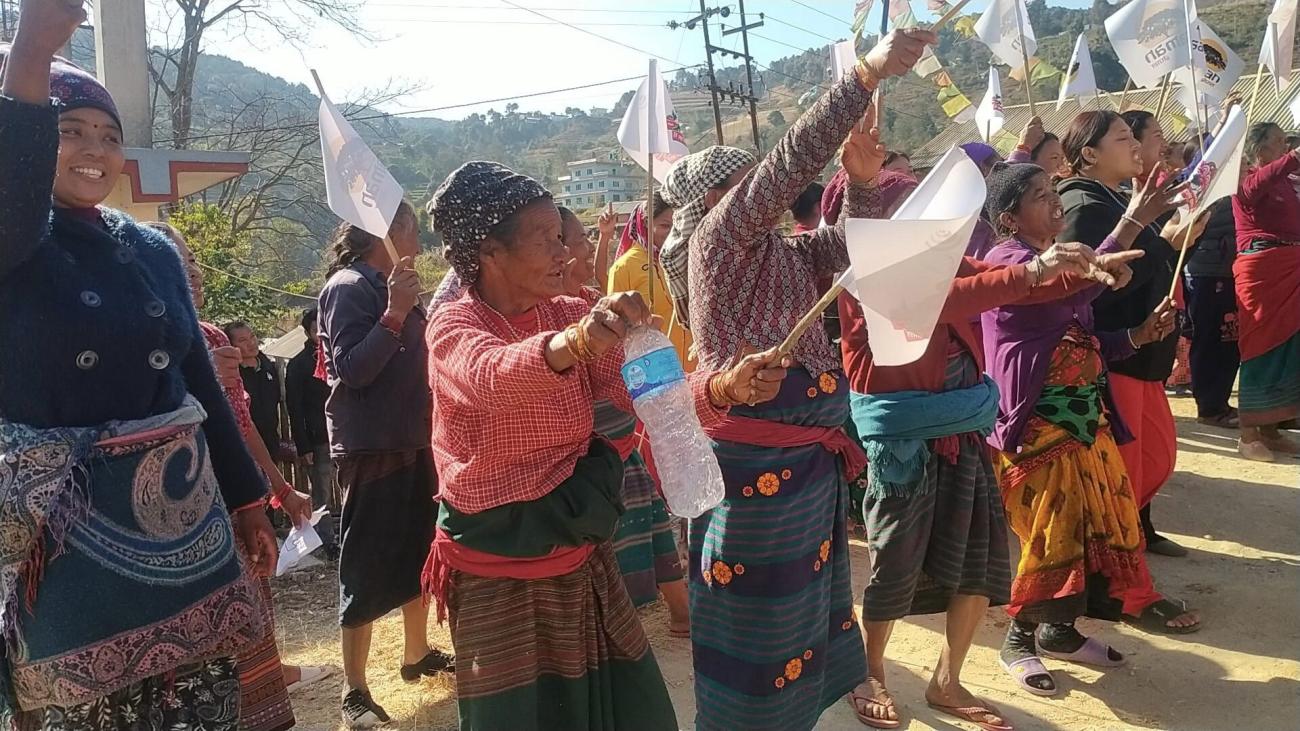
Tamang Indigenous Peoples, along with other local community members in Lapsiphedi (Bojheni) village in Shankharapur municipality in the northeast Kathmandu valley, are continuing their peaceful protest against a hydroelectric transmission line and power station. At the end of December 2022, they formed a committee demanding the relocation of the Tamakoshi-Kathmandu transmission line and substation.
The Nepal Electricity Authority (NEA), a government-owned utility company funded by the Asian Development Bank, plans to build an electricity substation and connect it to a high voltage transmission line linked with other substations in Changunarayan, Kathmandu and Ramate, Nuwakot. The project would be funded under the U.S. Millennium Challenge Corporation Nepal Compact.
After years of opposition, the government of Nepal approved the controversial $500 million project in February 2022. Under the MCC Nepal Compact, a high voltage electricity transmission line will be constructed between the New Butwal-India border, New Butwal-New Damauli, New Damauli-Ratmate, Ratmate-New Hetauda, and Ratmate-Lapsephedi. The planned transmission line mostly runs above ground, and in some places above the settlements of Indigenous Peoples. The project in Lapsiphedi (Bojheni) is one such location.
Lapsiphedi (Bojheni) are ancestral lands of Tamang Indigenous Peoples, who still practice customary cultural and ritual practices called Choho (which are almost extinct in other Tamang settlements). Tamba, Bonpo, Lama, and Lopen are also preserved through their traditional practices. If the current construction plan is carried out, Tamang Indigenous Peoples will be displaced, threatening their identity and cultural heritage.
Lapsiphedi (Bojheni) is of strategic importance to Nepal’s electricity infrastructure development. The NEA plans to build a substation in Lapsiphedi (Bojheni) for distribution of three different high voltage transmission lines of electricity—400 KV, 220 KV, and 132 KV—generated from hydroelectric projects built mainly on the Tamakoshi and Sunkoshi river basins flowing alongside the Sindhupalchowk, Dolakha, and Ramechhap districts.
One of the proposed transmission lines will go through the middle of a Tamang settlement, creating a web of transmission lines in the area. The NEA never disclosed these plans to the public, which has been a major concern of the affected communities; many say the planned purpose of this design is to displace Tamang Indigenous Peoples, as the line will pose a danger to the entire village.
Around 500 affected Tamang households and others in the area have been opposing the construction of the substation and the transmission line in Lapsiphedi (Bojheni) since 2015. On January 1, 2023, community members protested when the NEA initiated a survey of the land to install the substation and the transmission lines. The protest has continued as repeated talks between the substation construction authority and the locals have not produced a solution.
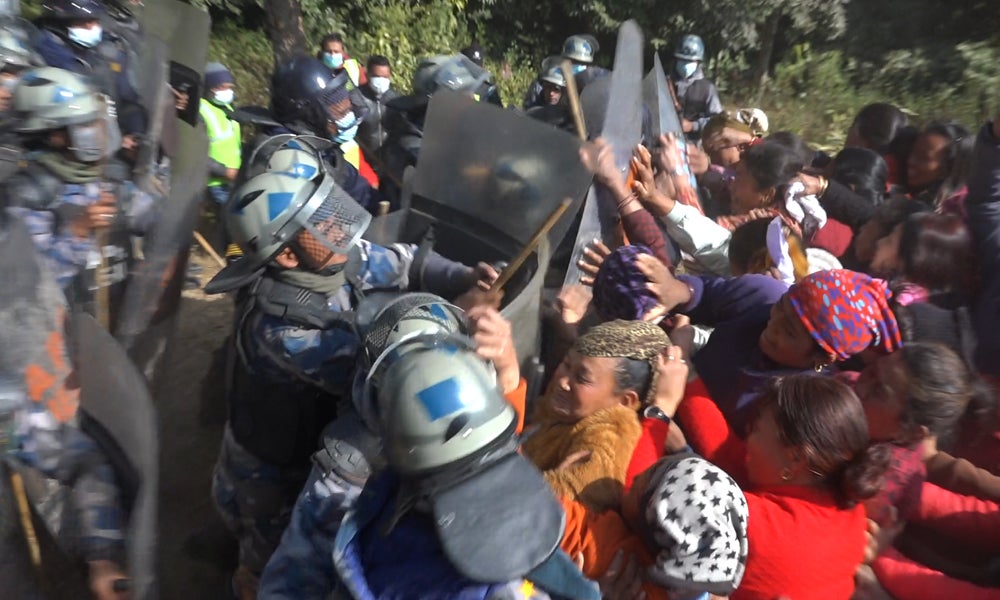
The police and armed forces have suppressed the protests, with at least seven protestors, including women and a minor, arrested. Police have threatened the protestors at gunpoint and used excessive force towards the Ward Chair, women, and other protestors, causing injuries to at least a dozen people.
The mobilization of armed police in the village has further created an atmosphere of fear among the residents, leading Asia Indigenous Peoples Pact, the International Working Group for Indigenous Affairs, and 83 additional organizations to issue a statement condemning the ongoing repression by security forces in Lapsiphedi (Bojheni).
The NEA has taken approximately 86.5 square kilometers of land belonging to 70 landowners through repeated land acquisitions for the substation, despite landowners’ protests. According to the landowners, their land was acquired using threats, intimidation, and without conducting any consultation or obtaining Free, Prior and Informed Consent of the communities.
“[The] authorities did not tell us that they will build electricity transmission lines and substations. Rather, they told us that a big office will come for the development of this area. But now we are forced not only to leave our land, but to leave our ancestral village. We were threatened to take compensation. They said if we were ready to take compensation now, we would get [it], [but] if not, we will never get it for the rest of our lives. Thus we took a minimal compensation without any further thought. Now that we know such life-threatening projects are coming, we want to return the money we received from them and we want our land back,” says Indra Kumari Waiba, a local villager.
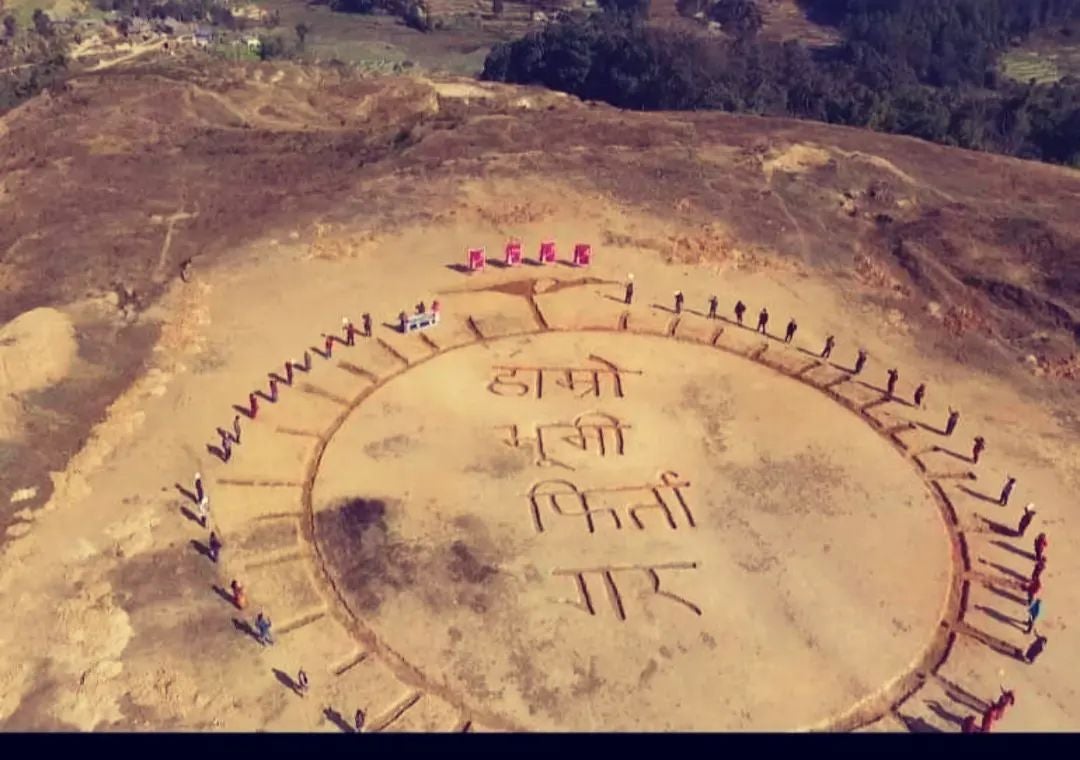
Lack of Access to Information
Tamang Peoples lack access to information in their native language. According to Ranjit Tamang, Coordinator of the Upper Tamakoshi Hydropower Project Victims Committee, the local landowners were not given accurate information when their land was acquired.
Tamang Peoples, along with other local community members in Lapsiphedi (Bojheni), became angrier after the government approved and designated the Lapsiphedi (Bojheni) substation to be the starting point of the transmission line. Local protests intensified especially after the NEA started soil testing and survey work for the transmission line and the substation in Lapsiphedi (Bojheni) under the protection of the Nepal Police and the Armed Police Force.
The government also has a plan to build another substation at Changunarayan connecting transmission lines from the Lapsiphedi (Bojheni) substation to distribute electricity to Kathmandu. A third transmission line is planned connecting Melamchi municipality, Bhotechaur, Sindhupalchowk.
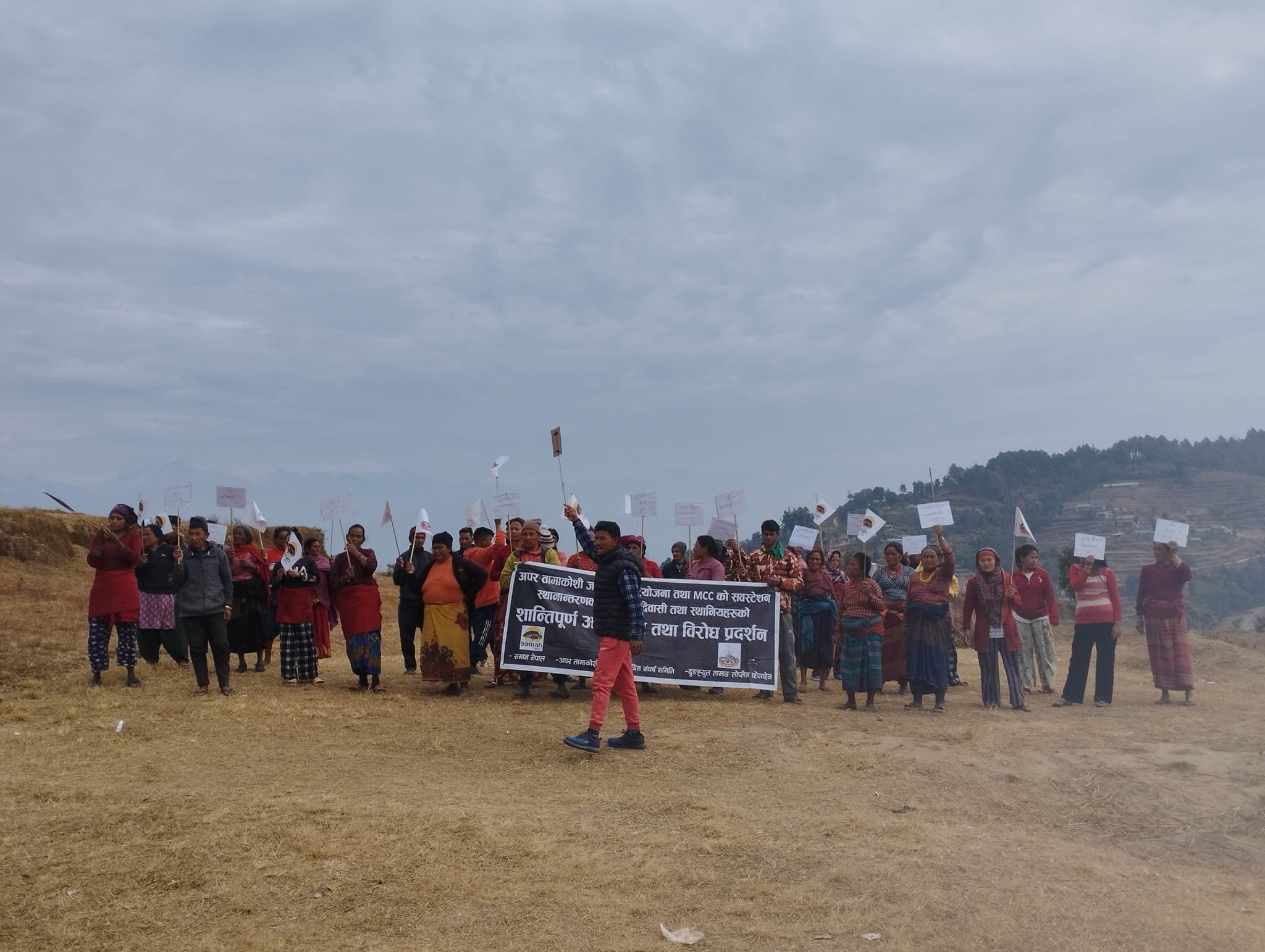
The transmission line directed from and to the three different substations will have a negative effect on the entire village of Lapsiphedi (Bojheni) due to the force of the electrical waves. But so far, NEA authorities are talking only about substations, and no information about future plans has been given to the public.
“The Indigenous and local communities were not informed about the project and no consultation was held with the communities. Even the local government is not aware of the ongoing survey process of the project and no permission was given from the local government in violation of legal provisions of Nepal,” says Surya Bahadur Tamang, Ward Chair of Shankarapur Municipality-3, adding that “the authorities began implementing the project by acquiring communities’ lands through threats and intimidation.”

No Public Hearing
An Environment Impact Assessment is required before the project is approved, and locals are adamant about not building a substation in Lapsiphedi (Bojheni). The original location of the substation purportedly was Mandandeupur in Kavre district. According to Bahadur Tamang, the government did not conduct an Environmental Impact Assessment or make its plans public. The community learned of the hearing, which is said to have been conducted in a hotel, only after it took place, and had no opportunity to participate.
A few months ago, during the interaction held in Lapsiphedi (Bojheni), the Managing Director of NEA, Kulman Ghising, admitted their process for obtaining consent from the public was weak. He has stated that it was a mistake to hold a public hearing in Kavre district during the Environmental Impact Assessment stage of the project. Protestors have called out Ghising on this critical oversight.
Recently, a meeting was held with the local government, affected communities, and the NEA where a three-point agreement was drafted namely for the removal of security forces from Lapsiphedi (Bojheni), a stop to the survey work with an agreement to resume only after consensus had been reached, and suspension of the protests. Locals have continued their peaceful protest against the NEA, even though the authority has temporarily suspended its work.

Violations of National and International Laws
Tamang Indigenous Peoples’ and other local community members’ protests are focused on three areas: the Environmental Impact Assessment; the Cumulative Impact Assessment, which focuses on the valued environmental and social components of the broader area; and their right to Free, Prior and Informed Consent to the project, which includes the community’s demand to relocate the substation to an alternative location and reroute the transmission line.
The Environment Protection Act of 2019 and the Environment Protection Regulation of 2020 mandate an Environmental Impact Assessment prior to any project, and projects should take action to minimize their impacts. Nepal voted for the UN Declaration on the Rights of Indigenous Peoples in 2007 and has been a party to the International Labour Organization Convention 169 since 2007. Accordingly, FPIC should be obtained from impacted communities. But proper implementation of these instruments has not been so easy in Lapsiphedi (Bojheni).
The project is in blatant violation of ILO Convention 169, Article 14 (2), which guarantees the land rights of Indigenous Peoples and states, “Governments shall take steps as necessary to identify the lands which the peoples concerned traditionally occupy, and to guarantee effective protection of their rights of ownership and possession.” Furthermore, the government did not secure the Free, Prior and Informed Consent of Tamang Peoples as enshrined in the Declaration.
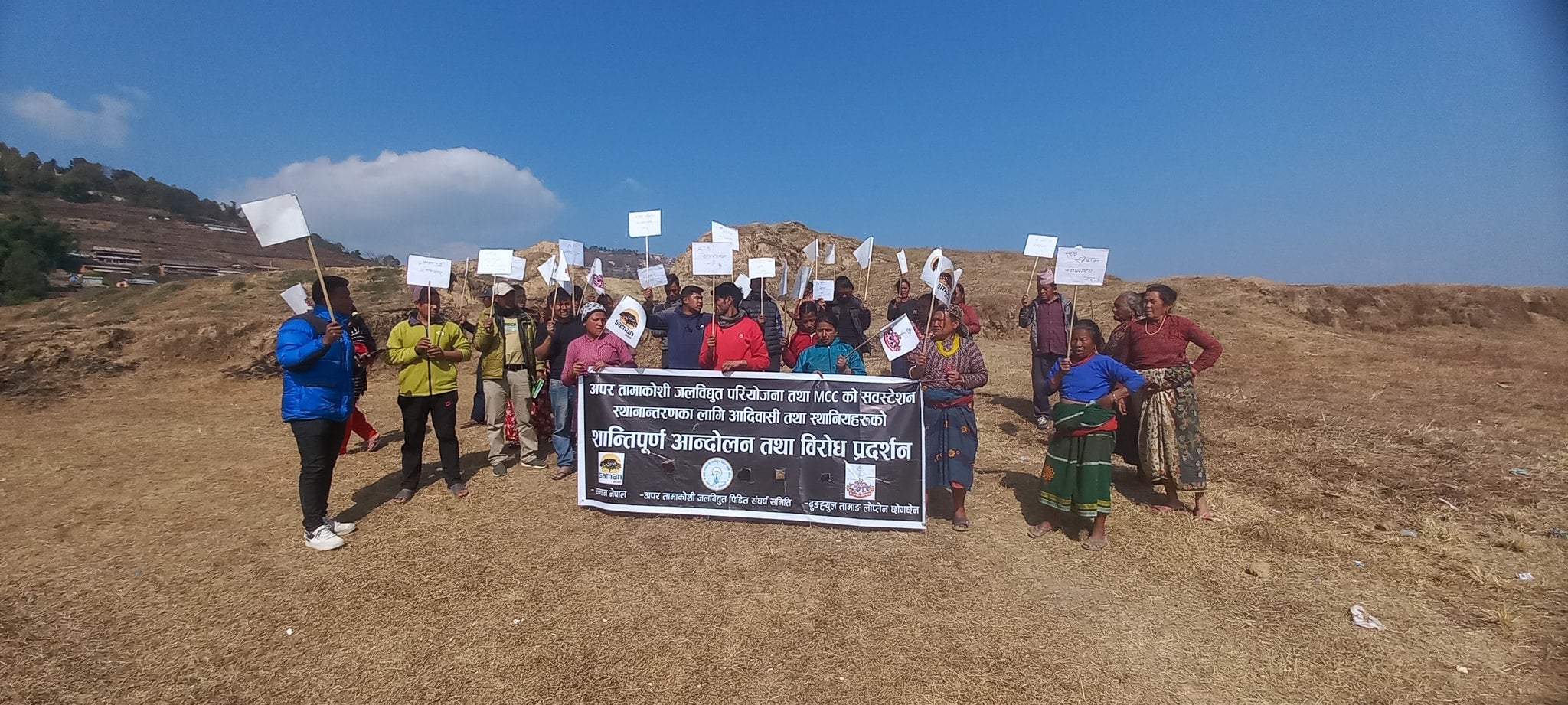
The project is also in violation of the Asian Development Bank’s safeguards, which require obtaining the consent of affected Indigenous Peoples regarding physical relocation from traditional or customary lands or development projects within customary lands under use that would impact the livelihoods or cultural, ceremonial, or spiritual uses that define their identity. The ongoing protests against the project clearly indicate that the Bank has violated its own policy.
The affected communities are concerned that the construction of the substation in the middle of their settlement area, with transmission lines running over their houses, lands, and religious and cultural sites, will significantly affect their livelihoods by causing negative effects on their health and the environment as well as devaluing their land and properties. They fear that this may eventually result in their displacement from their ancestral lands.
The Struggle Committee and the Ward office have jointly submitted their demands to concerned local and national authorities, including the NEA, the Ministry of Energy of the Government of Nepal, as well as the Asian Development Bank’s Nepal Resident Mission to urge them to relocate the Lapsiphedi (Bojheni) substation to an alternative location and reroute the transmission line. However, as yet, their demands have not been effectively heard or addressed.
